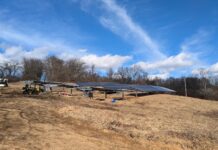What if planting a cover crop or alternative forage could provide an ecological, environmental and economic advantage to livestock and grain producers? This is exactly what these forages can do.
Our memory is short, but cover crops have been used as alternative forages for grazing for centuries. The use of these forages is growing in popularity and this winter you may see something green growing in harvested grain crop fields, and possibly livestock grazing that annual forage.
Benefits
Alternative forages for grazing benefit the soil by adding carbon, reducing compaction, retaining moisture and nutrients and reducing erosion while providing high-quality nutrition for grazing livestock and wildlife. Cover crops utilized for livestock are most generally planted to provide additional forage in summer or winter and, therefore, are classified as warm- or cool-season annuals.
Summer forages
A few of the most popular summer annual grasses are: forage sorghum, sudangrass, sorghum/sudangrass hybrids, pearl millet, Teff grass, corn and crabgrass. One underutilized summer annual legume is crimson clover. All of the above-mentioned forages can be grazed; however, Teff and crabgrass can be utilized as dry hay.
Winter forages
Following corn silage, wheat, oats and even early harvested soybeans, winter annuals provide high-quality nutrition during the winter months. Winter annuals, such as annual ryegrass, cereal rye, oats, triticale, turnips, kale, winter peas and radishes, have all been successfully used to extend the grazing season.
Planning forages
To use annual forages well, it takes planning. Attention to herbicide carryover, planting date, seeding rate, variety selection, cover crop suppression and intended use are all important considerations. Forages such as annual ryegrass, cereal rye and triticale do not naturally winter-kill and if left unchecked they will compete with the next cash crop. It is also possible to have some hard seed that did not germinate compete with cash crops the following year.
Positive effects
The University of Illinois’ study on integrating livestock grazing in crop systems, determined that livestock had generally positive effects on crop yield but can contribute to soil compaction. Producers who utilize annual forages on crop fields should attempt to minimize compaction issues by rotationally grazing and consider temporally removing animals when soils are saturated.
Cover crop session
There is a lot to learn when considering the use of cover crops for livestock. In an effort to help producers, an in-depth class on cover crops session is scheduled for Jan. 7, 2016, from 8 a.m. to 4 p.m. at our OSU Extension East Regional office in Belle Valley.
The cost is $35 which includes lunch and educational supplies. For the flier, call the Guernsey County OSU Extension office at 740-489-5300 or go to guernsey.osu.edu/events.














Good article. Have there been studies done to determine how much longer you can potentially extend the grazing season through cover crops? Also, is there data estimating how much you can reduce fertilizer costs by use of grazing cover crops? Thanks!